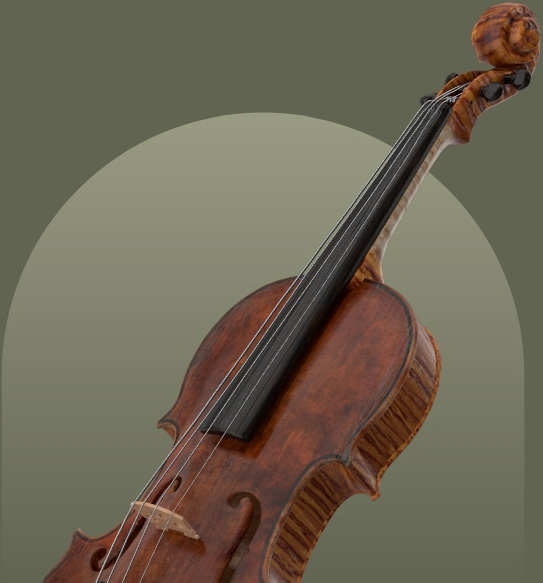John Dilworth
WILLEMS, Hendrick (I) Worked circa. 1650-1700 Ghent Belgium. Presumed son of Jooris Willems, below. Known or recorded are three large violas, a cello, pochette, and bass viol. The sole biographical information: employed to repair the bass in St. Bavon’s Cathedral, Ghent 1670. Viola in the Brussels Musical Instrument Museum, dated 1651, is high-arched with very long squared-off corners and lion’s head (probably a later addition). Soundholes very elegantly following early Amati pattern. Varnish of rich red-brown colour with dry Venetian texture. The collection also includes a cello with lime wood back, ribs and neck of walnut, and similar varnish of very high quality, golden-yellow in colour. Pochette with ribbed back and carved lion’s head dated 1679. Instruments made with the ribs set into grooves cut into the inner edges of the back, without a mould. Hendrick Willems tot Ghendt, 1651 [Stainer]
Cecie Stainer
A maker in Ghent, Belgium, about 1650-1700. An alto of large pattern has remarkably fine wood used for the belly; the corners are prominent and squared at the ends; the sound-holes, rather straight and stiff, are similar to the Brescian model, or those in a Stainer instrument; the neck ends in a lion’s head ; the outline and the beautiful finish could almost be mistaken for Italian work, but the varnish is too dry. It is labelled: ” Hendrick Willems tot Ghendt, 1651.” For a bass-viol made for use in Saint Bavon’s Cathedral (Ghent) he was paid, on March 28, 1670, a sum of £5 (Flanders). A small pocket violin, with a pentagonal back, with the neck ending in a lion’s head, was signed: ” Hendrick Willems tot Ghendt, 1679 ‘ In 1698 he is mentioned as the repairer of the bass used in the rood-loft of St. Bavon. Nearly all his instruments have beautiful wood for the belly, but walnut, lime-tree, or plane-tree wood is frequently used for the back and the sides, especially in the case of the basses.
Willibald Leo Lütgendorff
Vielbeschäftigter Geigen- und Lautenmacher des 17. Jahrhunderts. Sein Modell erinnert ebenso an Stainer wie an die Brescianer Schule: hohe Wölbung, scharf hervortretende Ecken, steife und steile F-Löcher. Die Arbeit ist sehr sauber, das Holz der Decke immer sehr gut; nur zum Boden, der bei den Violen häufig flach ist, nimmt er das Holz ohne Wahl, bald Ahorn, bald Buche, Linde oder Nussbaum. Der Lack ist gewöhnlich zu spröde Am Wirbelkasten bringt er gerne Löwen oder Frauenköpfchen an. Arbeiten von ihm sind in der Kathedrale von Gent. Aus der Sammlung Snoeck ist eine fünfkantige Pochette von 1679 in Berlin.
